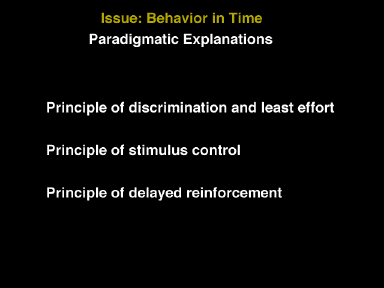 Slide 2-4
Slide 2-4

 Slide 2-4
Slide 2-4
How is the behavior obtained in a temporal task to be explained or understood? The initial approach of normal science is to understand complex phenomena as an instance of relatively well-understood, simple phenomena. The first thing to do then, is to look to well-documented functional relationships in an attempt to integrate the fixed-interval findings within a more fundamental and, therefore, more general perspective. Three well-established functional relationships could be invoked as illustrations of the process underlying the fixed-interval behavior. They are the principle of discrimination and least effort, principle of stimulus control, and principle of delayed reinforcement.
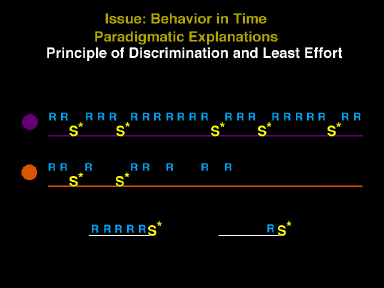 Slide 2-5
Slide 2-5
The first is called the principle of discrimination and least effort. It points out that if one behavior results in a reinforcer while some discriminably different alternative does not, then behavior will equilibrate to minimize the effort. This process could account for the absence of responding throughout the early portion of the interval, but would suggest that only a single perfectly-positioned response would occur. Some additional factor must be maintaining the additional responses.
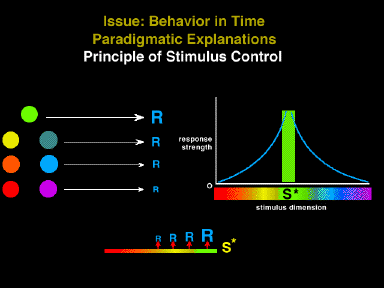 Slide 2-6
Slide 2-6
A principle which could account for the "wasted" responding would be based on the fact that similar stimuli control similar responses, while dissimilar stimuli control dissimilar behavior. The passage of most of the interval could be confused by the subject with the passage of the entire interval.
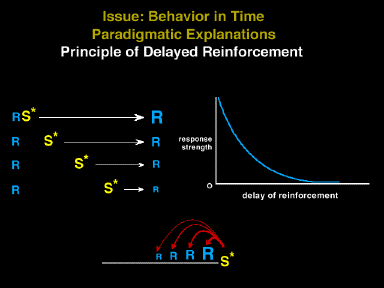 Slide 2-7
Slide 2-7
A second principle of causation could be advanced to account for the "wasted" responding. Behavior other than the immediately-contiguous response may be supported by the occurrence of a reinforcer after a delay. This delay would adversely affect the degree of strengthening. Not only would responding at the end of the interval be well supported, but responses further removed from reinforcement like those in the middle of the interval would be supported.
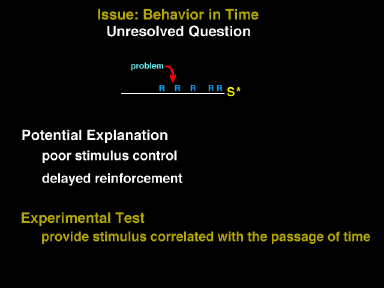 Slide 2-8
Slide 2-8
Unfortunately, responding in the antecedent portion of the second half of the interval is neither adequately predicted nor explained with the existing paradigm. But, poor stimulus control or delayed reinforcement are potential beginnings.
Date Last Reviewed : May 26, 2003